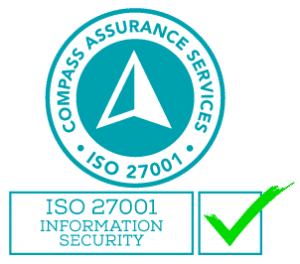Discover why cost savings, flexibility, scalability, redundancy, quality and compatibility make IP voice solutions the choice over legacy ISDN products Get Your Free Instant Service Quote
As ISDN nears its end, it’s time to look at other options. Understanding the differences between SIP and ISDN can help your business make the right choice when it comes to business phones.
As of 31st January 2018, ISDN connections are no longer available to customers who do not already have such a system installed. By 2022, Telstra will stop supporting ISDN products completely.
For those with an ISDN system in place, now is the time to better understand the advantages of IP voice vs. ISDN and why it makes sense to migrate soon. As noted in a recent post on the end of ISDN, Australian businesses now have the opportunity “to improve and upgrade their communications and collaboration systems to new IP based technologies, powered by fast broadband. … The migration helps give organisations a chance to both future-proof and add features to their communications platform that would not be possible over ISDN.”
Understanding IP Voice Vs. ISDN Basics
Session Initiation Protocol (SIP) is delivered over an internet protocol and is the communication standard used for VoIP (Voice over Internet Protocol) telephony.
Integrated Services for Digital Network (ISDN) is an older standard that sends voice traffic over a traditional phone network. ISDN uses a dedicated connection for business telephony.
Both services are delivered similarly and are options to deliver phone connectivity to your business. However, ISDN is an inefficient, costly solution today. With ISDN, your business needs to maintain two separate networks. One is used for your ISDN phone solution and the other is needed to run a corporate wide area network (WAN) or for Internet connectivity.
Another challenge is that with ISDN your business cannot connect your data network and your voice network. This leads to inefficiency and limited redundancy options.
Advantages of IP voice vs. ISDN
With SIP your business can use a single system for your voice and data network. Your business will save considerably on access charges and create redundancy for your communications tools that were not possible previously.
A SIP deployment on your company WAN lets you create a converged voice and data network. Reallocating some of the access charge savings to a backup solution will cost less than if using an ISDN deployment. In the event of a network disruption, the backup allows for your website and communications to keep running.
In addition, if your business has a legacy PBX phone system that uses an ISDN-based handoff, your system can still work in a SIP deployment by using a voice gateway.
When it comes to IP voice vs. ISDN, here are six reasons why SIP is a better solution.
Quality
It’s a myth that VoIP technology does not deliver the same quality as ISDN. This myth is perpetuated by the popular misconception that the internet is insecure and unregulated.
It’s true that voice services can suffer if bandwidth is restricted or latency is high. But these issues can be easily resolved by using the right kind of connection for your business. High-speed fibre-optic connections provide large bandwidths and maintain low latency that is perfect for voice traffic.
Sending VoIP traffic carries some risk as a public connection cannot be independently controlled and monitored. That’s why your business needs a solution that converges private data networks with a voice platform. This lets you apply Quality of Service (QoS) rules onto your connections, giving voice traffic the highest priority on the network. These configurations also allow voice to be sent without ever leaving your infrastructure or travelling on the public Internet before reaching the telephony network.
Redundancy
Converging voice and data onto a single IP connection allows for redundancy. ISDN connections make it nearly impossible to create true redundancy, especially for inbound traffic. Most “redundant” ISDN connections are delivered by the same last-mile carrier. That means that the most common physical interruptions, such as a line break, follow the identical footprint, throwing both connections offline.
Redundancy is far more resilient on data networks. When your business uses an IP-based solution you can use both technologies but on different paths that connect on separate hardware. If one pathway or device is interrupted, the network can be maintained with little to no disruption to your operations.
Flexibility
A typical Australian ISDN deployment includes a phone number associated with a line and channel block. Your business is charged a rental fee for that number whether it’s needed or not. This structure artificially dries up the cost of your ISDN.
With an IP-based voice service, numbers are separated out from channel blocks, lowering the service cost. This unbundling has another advantage. Phone numbers are not associated with physical locations. Incoming calls to SIP numbers can be redirected easily to other locations.
This process typically is done via an automatic failover between multiple office locations. This lets calls to one site be answered by another if all the line are busy. This functionality is especially important in the case of a natural disaster. If a business location were to flood, for instance, the phone lines could be rerouted easily to other sites until the location could be restored.
Scalability
Today’s businesses need to be able to scale quickly as volume changes. ISDN services frequently are limited to the size of the purchased channel blocks (usually 2, 10, 20, or 30). In some cases, this means your business is paying for unused overhead, especially if your company experiences regular or seasonal fluctuations in call volume or business size and scope.
With SIP, which is carried across an existing data connection, there are no physical limitations. The IP voice channel limits are set via the software definitions. This means that if the bandwidth is available to handle traffic, channels can be added easily.
Price
When it comes to the bottom line an SIP solution almost always wins against ISDN. The convergence of voice and data resources is one of the biggest cost advantages of using SIP. As noted above, your company will pay lower access charges with one network compared to separate networks for voice and data. Most businesses save money even when some of those access charge savings are applied to building a redundant network connection.
Your company will also save with SIP by reducing your call costs. In some cases, better rates and terms can cut your phone bills in half.
How do you know if you’re paying too much? There’s an easy way to check if your phone bill is more than it should be. You need to determine if your carrier is charging you for calls by the second or in 30- or 60-second call blocks. While it’s true that in most cases local and national calls are not timed, your plan may still be using the block system. Be sure to check your contract terms.
Compatibility
If your company is still using a PBX solution, you can still gain the advantages of being in the cloud. A cloud-hosted PBX solution gives you greater flexibility and features … and most on-site PBX systems are SIP-compatible. If your on-premises PBX system does not have this feature you can still gain access to SIP via a voice gateway. This tool converts ISDN handoffs to SIP, meaning you gain all the SIP benefits without replacing your old phone system.
The Steadfast Solution
Steadfast Solutions offers a secure, cloud-based environment for your business phone system. With a Steadfast phone system, employees can gain reliable connections at the office, across office locations, while working from home or on the road.
Cloud PBX solutions offer several advantages, including:
- Low initial investment
- No more line rentals
- Scalability up to 200 users
- No hardware purchases, maintenance or management
- Mobile functionality on laptops, smartphones and tablets using iOS and Android operating systems
- Free interoffice calls
- Reduced onsite support
- Outlook and Exchange synchronisation
- Audio conferencing
- Instant messaging
- A desktop app to manage incoming calls
Learn more about how Steadfast Solutions, based in Melbourne and Brisbane, can help your business get the most out of its phone systems. Start your initial consultation by contacting Steadfast Solutions, Australia’s leading national technology provider.




